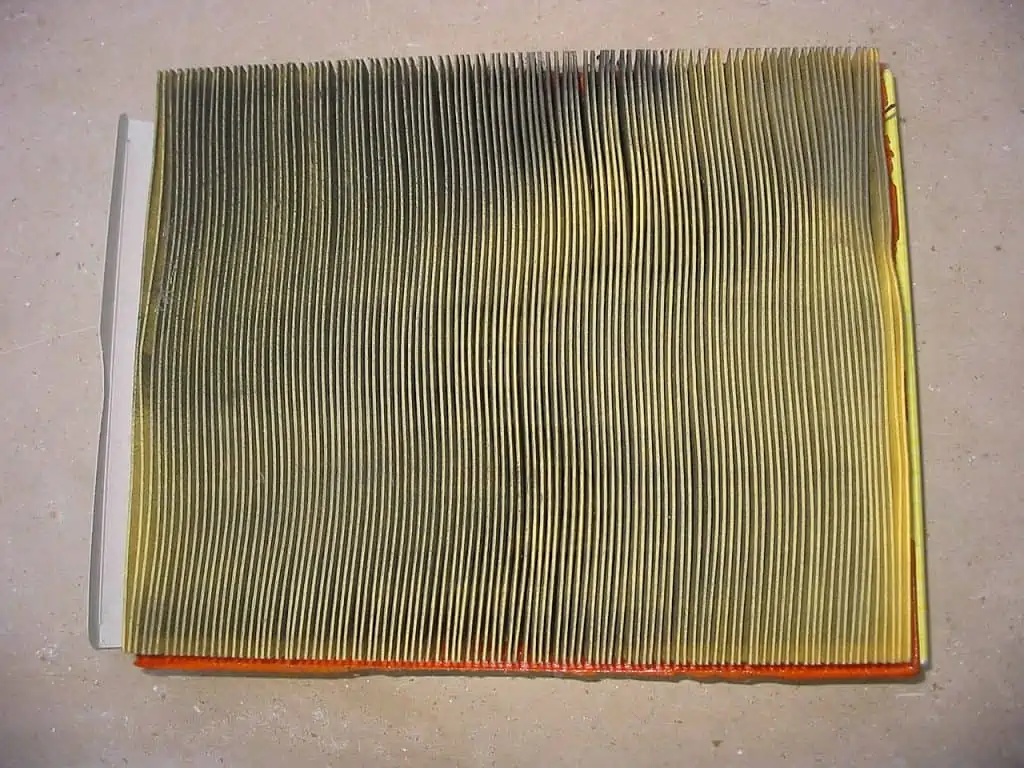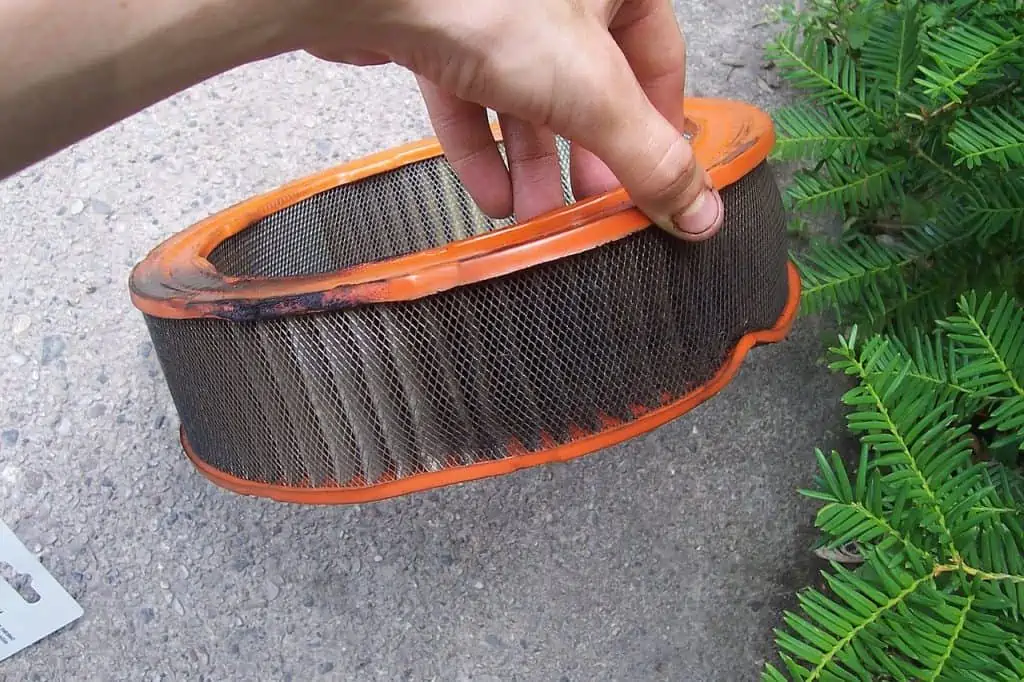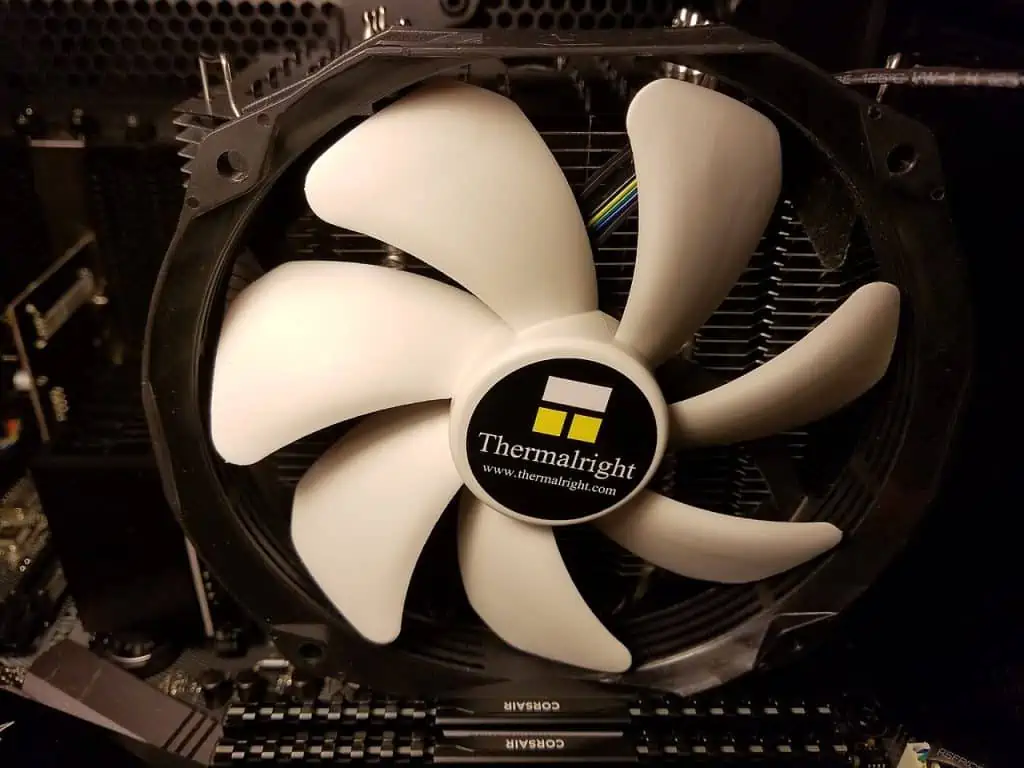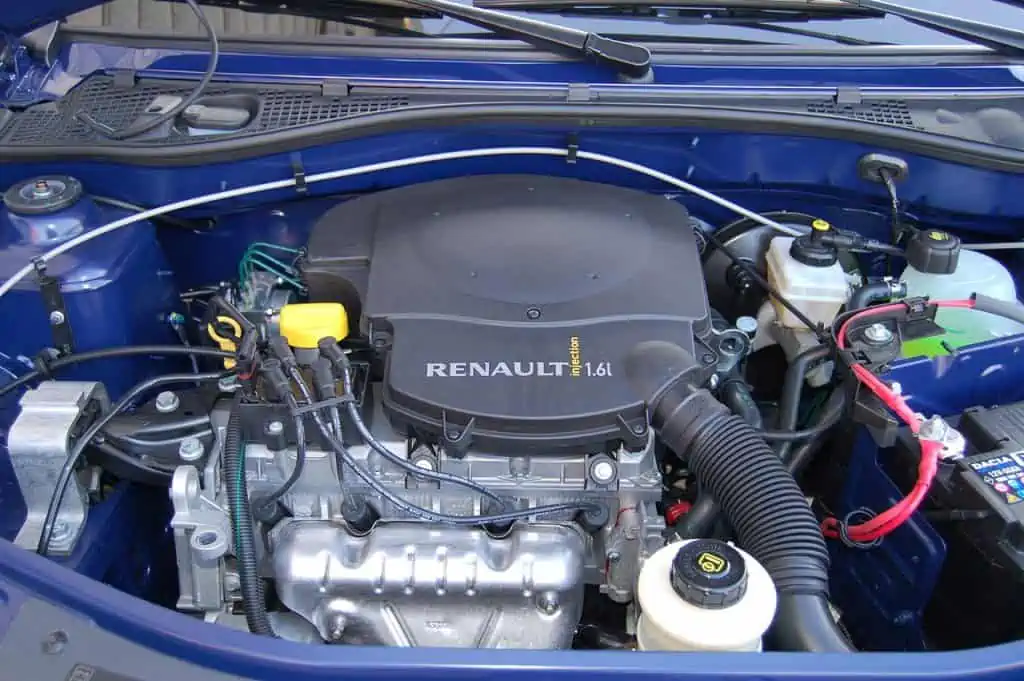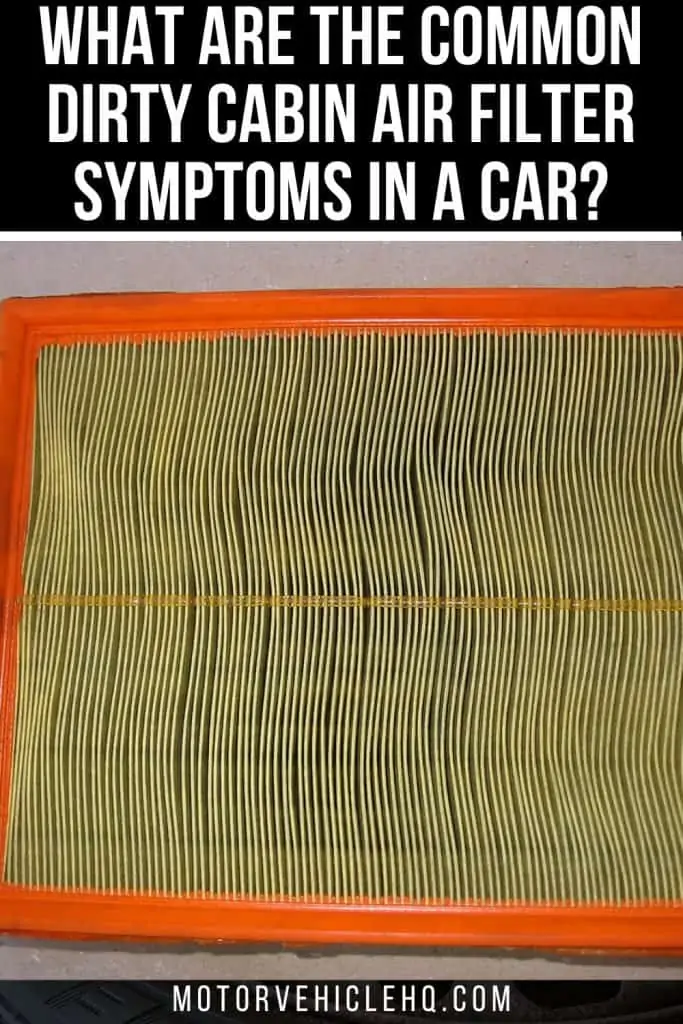Your car has several filters, and each one serves a specific purpose to keep trash and impurities from reaching sensitive parts.
For instance, the cabin air filter is in charge of purifying the air that surrounds you and the other passengers. Naturally, you should change this filter anytime it becomes dirty, but how can we tell whether the cabin air filter is blocked?
A common filter that needs replacing is the cabin air filter. Here’s how to detect whether your cabin air filter needs to be replaced and how much it will cost.
When it comes to vehicle maintenance, the cabin air filter is perhaps the one that is most frequently overlooked, and many people have little knowledge of it.
When it comes to the comfort of your ride, the difference between an old, dirty cabin air filter and a new one can be significant, yet you might not even realize it.
Thankfully, this tutorial will teach you all you need to know about the cabin air filter.
We will discuss the item’s purpose, location, replacement cost, and how to tell when it needs to be replaced.
You may find some in-depth information on the typical dirty cabin air filter symptoms in this post. We strongly advise you to check your air filter and replace it if necessary each time you experience any of these symptoms.
A Cabin Air Filter: What Is It?
Every driver has to be aware of the primary function of the cabin air filter in their car before delving into the specifics of dirty cabin air filter symptoms.
The engine air filter and cabin air filter are frequently confused, according to popular belief. That’s not the case, though. The glove box’s lower filter, known as the cabin air filter, is in charge of removing any air that enters the car and is breathed in by the occupants.
The clean side of the cabin air filter by Donar Reiskoffer / CC BY 3.0. The air surrounding you and the other passengers is cleaned by the cabin air filter. Of course, you should replace this filter whenever it gets soiled.
The engine air filter, on the other hand, is situated close to the engine compartment and is in charge of filtering any air that enters the engine cylinders.
According to the cabin air filter’s intended function, you should change it out as soon as you notice a blockage because failing to do so might result in health problems from breathing contaminated air. Therefore, the cabin air filter becomes a crucial component, particularly if you have respiratory issues or allergies that are affected by contaminated air.
Some contemporary vehicles use cutting-edge technology to filter the air and greatly purify it to an extremely high level. For instance, Tesla makes use of cutting-edge technology that makes the air inside the car 10 times cleaner than the filtered air in conventional cars.
No matter what kind of technology your car uses, it’s crucial to monitor this air filter and change it anytime you suspect it may be unclean.
Where Is the Location of the Cabin Air Filter In a Car?
In most vehicles, the cabin air filter is found either behind the glove box or behind a cover that may be accessed from the engine compartment through the front windshield. Look attentively at the blower motor if you know where it is!
To get to the filter in many vehicle models, you’ll need to remove the glove box. Many manufacturers of cabin air filters include written instructions on how to change the filter for your particular car model with the filter.
The filter is typically positioned beneath the glove compartment in many Asian vehicles, and in certain situations, the glove box needs to be removed to replace the cabin filter.
In European vehicles, it is frequently hidden under a cover behind the front windshield from the engine compartment.
Which are the Common Dirty Cabin Air Filter Symptoms In Cars?
Since the air filter gathers all dust and other impurities, clogging is to be expected over time. Therefore, to enjoy the clean and fresh air, you must change the air filter whenever you are aware that it is blocked. But neglecting to update the air filter affects the quality of the air and affects several car systems that rely on the air filter.
Let’s examine some of the typical signs of a poor cabin air filter that you may discover once it becomes blocked. Of course, you need to change the filter as soon as you observe any of these signs:
1. A Decrease In Airflow
In essence, the cabin filter is a part of your car’s air conditioning system. It is also referred to as the air-conditioning filter and is frequently made of cotton- or paper-like substance. When it’s in its optimal form, it assists to remove air contaminants before they reach your inner cabin space. Additionally, filters can support the maintenance of the air conditioner.
When you see reduced flow entering the car, this is the first and most typical sign that your air filter may be dirty. Have you tried turning on the heating or air conditioning system, for instance, only to discover that there is very little flow flowing in? That issue could be caused by an obstructed air filter.
If you’re on a long, enjoyable drive and realize that the air doesn’t appear to be moving, despite how hard you pump the air conditioning, it may be because the filter is blocked. There is too much muck clogging the filter paths, as seen by the absence of free-flowing air.
The dirty cabin air filter by Donar Reiskoffer / CC BY 3.0. The cabin air filter is either located below the glove compartment, behind a cover that may be opened from the engine compartment through the front windshield, or at the blower motor.
If you have stagnant air, think about having your filter changed or at the very least checked. This also holds if the airflow is sluggish even at modest fan speeds. Simply turning the fan up might indicate that it’s time to change the filter if you need to do so to satisfy your demands.
If that’s the case, you must check the air filter and other parts because there may be another explanation for the issue. Once you’re certain the issue is with the air filter, you should either clean it if you can or replace it if it’s worn out.
2. Very Bad Odors In the Cabin
Any outside air should be filtered away by the cabin air filter. So, for instance, if you’re driving through factories or other places where there is smoke from fires or other sources, you shouldn’t be able to detect these potent odors inside your vehicle. Depending on the quality of the air filter, all of these should be handled by the air filter.
However, changing your air filter could be a good idea if you notice that you are starting to smell all the unpleasant aromas coming from outside. The air filter’s ability to keep unpleasant odors from entering the vehicle decreases as it becomes dirtier. Additionally, even if there isn’t an odor coming from the outside, the air filter itself may begin to smell dirt or pollution.
3. Fog In the Windows Problems
While the majority of cabin air filter problems have to do with the air quality entering your vehicle, this air filter also serves another crucial purpose, namely the anti-fog system.
If you’ve ever attempted to defog the windows and discovered that the system isn’t functioning, it can just be a straightforward issue with a faulty or dirty cabin air filter. Therefore, we strongly advise you to inspect it and replace it as necessary.
4. Heating and Cooling System Problems
Unsurprisingly, a blocked air filter also affects how well the heating and cooling system works. It’s not surprising to learn that when the air filter is dirty, you’ll experience issues with the AC system because all the air should pass through the air filter before it enters the heating system and, ultimately, your car.
Very little air may enter the system when the air filter is blocked. As a result, the heating or air conditioning system in your car won’t be able to regulate the interior temperature as well.
Of course, there is a wide range of probable causes for problems with the heating and air conditioning systems. Therefore, before determining if it’s a dirty cabin air filter or not, your mechanic must do a complete check.
5. Reduction In Vehicle Power
Unbelievably, your cabin filter may influence your air conditioning system, and the AC can have a significant impact on the overall power of the car. You might need to increase the AC if your filter is blocked.
Your AC’s workload increases as does the engine’s. Your car’s motor train, alternator, and other vital components might operate with less energy. You could think that the car is just not up to pace when these components that provide horsepower fail.
While this is unfortunate news, there is a silver lining: If your vehicle looks sluggish, it may not be a serious technical issue, but rather something as straightforward as a blocked filter, which is simple to replace.
6. A Rise In Fan Noises
Your car’s AC system should simply make a gentle noise when air escapes the vents when it is turned on. Your air cabin filter and AC system are in good shape if the fan makes a gentle, healthy noise. The filter is failing, though, if you start to notice an increase in fan noise.
Auto engine air filter clogged with dust and grime by Ahanix1989. The engine air filter and cabin air filter are frequently confused. The engine air filter is situated close to the engine compartment and is in charge of filtering any air that enters the engine cylinders.
In addition to making it harder for the air to enter and be effectively filtered, big particles that enter the air cabin filter also produce a lot of noise as the air travels through. As a result, you would always hear a loud noise when turning on the fan in your car. If you don’t fix the air filter, this noise will just get louder with time.
Why are Cabin Air Filters Important In a Car?
It’s crucial to pay attention to what’s happening within the cabin. The heater — how’s that going? How does the A/C work? Is it pleasant to drive or a touch stuffy and odorous?
Check your car’s cabin air filter if you’re experiencing a stifling odor or unpleasant odor. A little-known hero of the automotive industry is the cabin air filter. It balances a variety of duties, such as:
- aiding in the purification of the cabin’s air of pollutants, dust, and other contaminants.
- assisting in odor removal in the HVAC system of the car.
- assisting in ensuring sufficient circulation for defrosting and defogging, as poor vision via your car’s windows can seriously impair your ability to drive.
If your car’s cabin air filter has never been replaced, you can experience one or more of these symptoms. To determine whether it is time to replace your vehicle’s cabin air filter, locate it in your owner’s handbook.
Alternately, bring your vehicle to a nearby full auto maintenance center to have a qualified mechanic make sure your cabin air filter is clean and in good condition.
Can I Drive My Car Without an Air Filter In the Cabin?
While driving without the cabin air filter is technically impossible, it’s never a smart idea. You will notice some of the signs of a poor cabin air filter, especially while using the AC and heating systems, even though your car won’t cease running if the cabin air filter is broken or missing.
It is predicted that you will eventually need to make some costly repairs to the AC and cooling system if the cabin air filter is missing from the car or isn’t in excellent shape. Because they are not extremely expensive and replacing them won’t be a major hassle, you must have a decent cabin air filter in your car.
Is It Valuable to Change the Cabin Air Filter?
Many novice drivers have the opinion that a component is not worth replacing if it interferes with the vehicle’s ability to be driven. That isn’t always the case, though.
For instance, even while a dirty cabin air filter won’t necessarily prevent your car from operating, you still need to get it serviced right away. Thus, in addition to having more functional heating, cooling, and defogging systems, you will be able to experience clean, fresh air.
If you suffer from allergies, replacing the cabin air filter becomes imperative and mandatory. Recent statistics show that after changing the air filter, drivers notice a significant decrease in the frequency of allergies and allergic responses, particularly in the spring and fall.
How Much Does a Cabin Air Filter Cost to Replace?
Fortunately, changing the cabin air filter is not a difficult task and won’t set you back much money. You could expect to pay between $70 and $100 to replace the cabin air filter, according to automotive specialists. However, it shouldn’t cost you more than $50 to change it yourself if you don’t require a technician.
Car AC cooling fan by Bretwa / CC BY-SA 4.0. If the fan is quiet and healthy sounding, your air cabin filter and air conditioning system are in good shape. However, if you start to hear more fan noise, the filter is failing.
Because there are not many alternative outcomes for this task, it would be worthwhile to learn how to add a list of cabin air filters yourself. To avoid dealing with blunders that might end up costing you thousands of dollars, many vehicle repairs and maintenance should be handled by experts.
However, because there aren’t many components in the region you’re working in while installing a cabin air filter, there’s a very high likelihood that you’ll make a mistake. There won’t be many of them; just a few.
To change the cabin air filter yourself, you should thus check into some of the available YouTube videos or other web materials, which will guide you through the process step-by-step. The only thing you need to remember is to get the appropriate filter and know how to use it correctly.
How Do I Change a Dirty Cabin Air Filter In My Car?
We’d like to provide you with a fast rundown of the essential processes involved in replacing the cabin air filter because it’s not a huge deal. Let’s look more closely below:
1. Select Your Working Space
Although changing the cabin air filter doesn’t need a lot of work or specialized equipment, you’ll need to perform it in an open location with plenty of ventilation. This is due to the possibility that the filter is unclean and contains big amounts of toxins or particles that you don’t want to breathe in.
2. Acquire a Replacement Cabin Air Filter
The filter must be purchased before you begin working; otherwise, you risk having to wait a long time for a replacement. You may always consult the owner’s handbook for your car to learn more about the specific kind of filters it uses.
To obtain a better sense of what kind of air filter suits your car, you can also conduct an online search for the precise kind and manufacturer.
3. Find the Location of Your Dirty Cabin Air Filter
You must park your car in a flat spot and have your car ready to replace the cabin air filter once you’ve bought the air filter. The owner’s handbook for your car must next be consulted to find the cabin air filter.
4. Lift Off the Dirty Cabin Air Filter
You must remove the filter after you’ve found it. However, before you remove it, you should probably snap a photo of the cabin air filter or make a note of its position because you’ll need to replace it in the same manner.
Additionally, it could be a good idea to contrast the new and old filters to ensure that you bought the proper one, or at the very least, the appropriate one in the right size.
5. Put the New Cabin Air Filter In Place
Similarly, you may position the new filter correctly by swiveling it in the appropriate direction. Once more, you should be able to see some arrows on the filter itself indicating which way the airflow should be directed.
How Often Should the Dirty Cabin Air Filter Be Replaced?
Every year or 15,000 miles, activated charcoal cabin air filters should be changed (24000 km). Every two years or 30.000 miles, standard particle cabin air filters should be updated (48000 km).
Car engine compartment by Huhu Uet / CC BY-SA 3.0. The cabin air filter is commonly concealed below the front windshield from the engine compartment in European cars.
You must go to the manufacturer’s repair manual or contact your dealer to obtain the necessary information for your vehicle to know precisely when to change the cabin filter for your particular car model.
Where you reside does affect how often you need replacement. Cleaning your filter at least a few times a year before replacing it can make a significant impact if you often travel on unclean, dusty roads or in highly polluted locations since it will clog up more quickly in those situations.
In locations with higher than usual humidity, cabin filters may need to be changed more frequently since a musty odor is likely to emerge. Unfortunately, in this case, cleaning the filter is probably of no use.
In most vehicle models and filter types, I advise replacing the cabin air filter once a year or twice a year when you replace the engine oil because they are frequently relatively affordable.
If I Do Not Change the Dirty Cabin Air Filter, What Happens?
If the cabin filter is not changed, you may have symptoms such as an unpleasant odor, poor airflow through the vents, inside windows that are cloudy or frozen, allergies, or whistling sounds from the air vents.
A bad odor in your car’s interior can quickly become trapped inside, lowering its value and potentially endangering the air conditioner’s internal components. Therefore, it is always advised to maintain an updated cabin air filter.
Are the Dirty Cabin Air Filters Cleanable? – How to Clean
Your cabin air filters may indeed be cleaned. You must first remove the cabin filter from your vehicle to clean it. Be careful to consult your car’s handbook to learn where the filter is placed because it might differ from manufacturer to manufacturer or model to model.
In most vehicles, it is often located behind the dashboard or the glove box, but check the owner’s handbook or online to make sure.
The size and form of the air conditioner filter might vary depending on the vehicle, but it generally resembles the air filter in your engine but is smaller. Typically, a woven cloth filter is housed inside a rectangle or square frame.
Locate the cabin filter (some cars, like many Mazdas, have more than one), then carefully pry it out from its mount and set it aside on the floor or a work table. A source of compressed air, such as an air compressor, is required.
Holding the cabin filter gently, blow air through it. Make careful to blow air through each filter slot to flush out any dust that may be hidden in a crevice.
You run the danger of harming the filter’s pleats if you let the air hose nozzle go too close to them. Spray the filter after fully blowing air through it with something like FAB-1 or K&N Filter Refresher.
After spraying it, gently reattach it to the mount you removed it from after allowing it to dry for a short while. Start the engine and activate the HVAC system so that air is being blown out of the vents. You should immediately detect a significant improvement in the freshness of the air.
What to Avoid Doing While Cleaning Dirty Cabin Air Filters
Do not use any cleaning tools, such as cleaning brushes or anything similar, when cleaning. One of the most delicate components of a car’s HVAC system is the pleated (zig-zag form) air conditioner filter, which is also one of the most vulnerable.
Avoid using any detergents as well. To clean it, avoid washing it with water. The pleats are more likely to be harmed by water washing, and the filter must be air dried without using excessive heat (such as a hair drier), which might take a lot of your valuable time.
To get the most out of your car’s HVAC system, clean the vents in the dashboard in addition to the filter.
Side window defogger wires of a car by Etan J. Tal / CC BY-SA 4.0. It might be as simple as a malfunctioning or dirty cabin air filter if you’ve ever tried to defog the windows and found that the system isn’t working.
What are the Different Kinds of Cabin Air Filters?
Even while each filter performs a similar function, there are several varieties of cabin filters available, each with its advantages and disadvantages. 4 main categories of filters are as follows:
1. The Particulate Filters
The primary filtering medium of a particle filter is often made up of a porous fibrous material, which also serves as the filter’s construction material. It captures particles with a diameter of 0.3 microns or larger for particulate filtering. In other words, a particulate cabin filter is the most fundamental or conventional one, which works well but does not filter out ultra-fine particles.
2. The Charcoal Filters
Compared to a standard particle filter, a charcoal filter is a more complex filter. The primary filter is made of the customary porous material, and the second layer of charcoal that absorbs tiny pollutants in addition to particles is included. Even gaseous pollutants like smoke and exhaust fumes can be reduced to some extent using a charcoal cabin filter.
3. The Activated Carbon Filter
The same basic filtering medium is used to create an activated carbon air cabin filter, but an additional layer of activated charcoal or carbon is added. This particular brand of carbon, called activated charcoal, has a greater potential to absorb gases.
Thus, in addition to exhaust gases and particulate matter, the activated charcoal layer also absorbs odors and gasses like carbon monoxide. Additionally, germs and other microbes can be eliminated with an activated charcoal filter.
4. The Electrostatic Cabin Air Filter
The most advanced filter of them all, this one traps pollutants and particulates using a static charge. Electrostatically charged fiber layers in the filter attract and firmly retain contaminants as the air passes through them. Along with particle materials, smells, fumes, and smoke may all be effectively removed using electrostatic charges.
NOTE: Although using an air filter is unquestionably necessary, the choice of which filter to employ is a personal one. Particulate filters are inexpensive, while carbon and activated carbon filters may cost up to three times as much. The decision, however, must be based on many variables, including the cost of replacement, the quantity of pollution in the area, and the function they provide.
The Conclusion
Although the cabin air filter may not directly affect your car’s ability to drive, it is crucial to maintain a clean air filter to breathe in the fresh air and avoid respiratory and health issues.
You should become familiar with some of the typical dirty cabin air filter symptoms because it is normal for the air filter to become dirty over time. In this manner, you may always replace it right away. However, if your vehicle has some other serious issues, it may be best for you to address those issues first before concentrating on the cabin air filter.
The quality of cabin air is crucial for everyone’s health as well as the long-term maintenance and performance of your car. It’s crucial to breathe clean, fresh air, particularly on lengthy travels and especially on chilly or wet days when you don’t want to open the windows. Make sure to get the cabin filter examined or replaced regularly to be on the safe side.
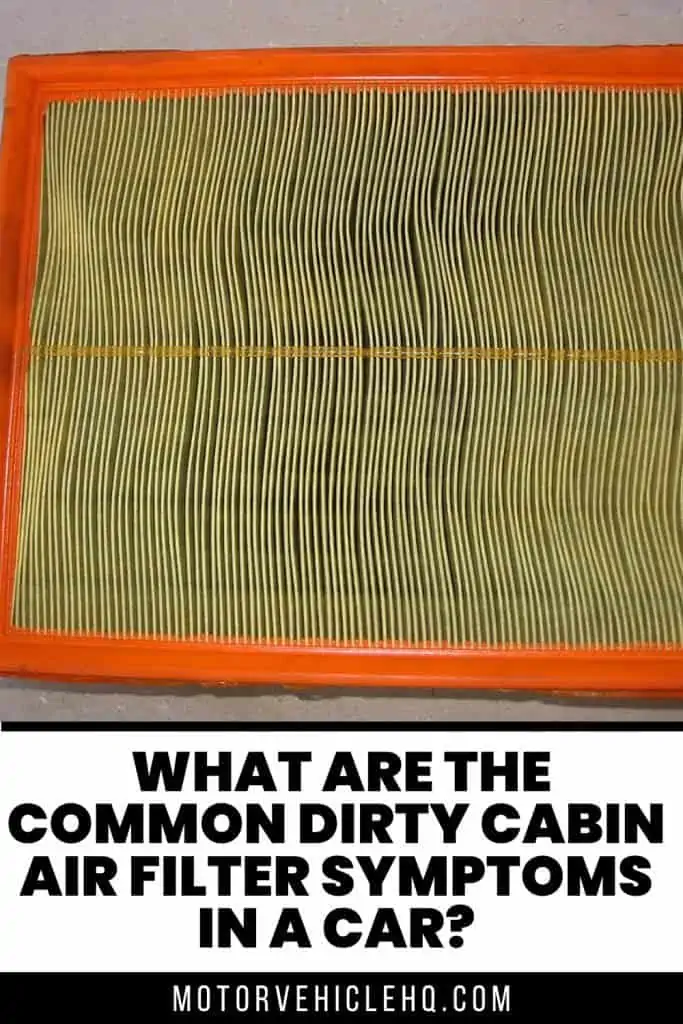
The clean side of the cabin air filter by Donar Reiskoffer / CC BY 3.0

Jim Wicks is the founder of MotorVehicleHQ. With over two decades of experience in the automotive industry and a degree in Automotive Technology, Jim is a certified car expert who has worked in various roles ranging from a mechanic, car dealership manager, to a racing car driver. He has owned more than 20 cars over the past 15 years. Ask him about any vehicle you see on the road and he can tell you the make, model and year. He loves the aesthetics of all things cars, and keeps his vehicles in pristine condition.
In his free time, Jim enjoys getting his hands dirty under the hood of a classic car or taking long drives along the country roads. His favorite car? A 1967 Shelby GT500, a true classic that, according to Jim, “represents the pure essence of American muscle.”

